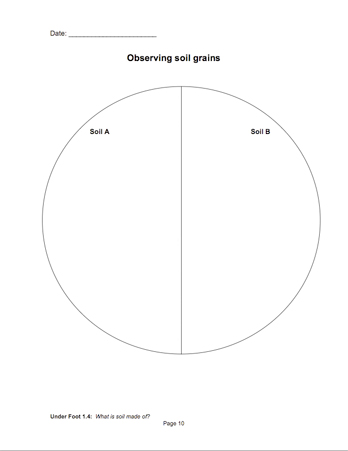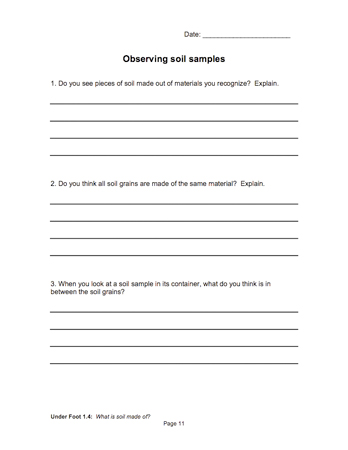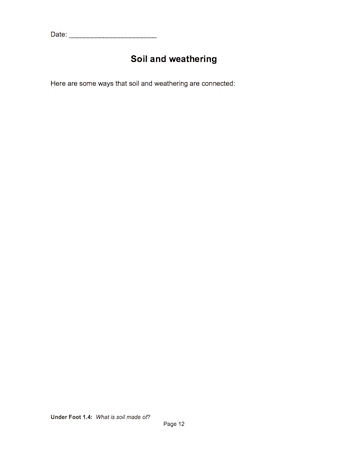What is soil made of?
Plan Investigation 1.4
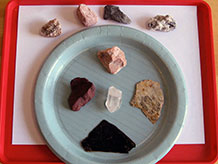
If you scoop up a shovel full of soil on Cape Cod, it will be full of sand. Scoop it up in Georgia, and it will be full of clay. Your backyard soil may have bits of leaves and grass in it. Everywhere you go, soil has its own character — but it’s all soil. Is there a way to think about soil no matter where we find it?
Formative Assessment
Available online at inquiryproject.terc.edu
In this investigation, students observe two soil samples, one sandy and one more organic, and then compare their properties in a Venn diagram. They try to identify components of the soils, and consider the "empty" spaces between grains. They ponder where soil comes from and learn about weathering.
By the end of this investigation, students will understand that all soils are made up of small grains of minerals and or organic matter; and the spaces between the grains, hold air and or water.
Learning Goals
- Identify the components of soils
- Understand the meaning of parent material and organic matter
| Sequence of experiences | ||
|---|---|---|
| 1. Ask the question | Small Groups | 5 Mins |
| 2. Explore the soil samples | Small Groups | 15 Mins |
| 3. Share the data | All Class | 10 Mins |
| 4. Make meaning | Discussion | 15 Mins |
Materials and Preparation
The two soil samples: The kit material labeled "organic soil" already includes a mix of organic and mineral components. Adding sand to the soil increases the mineral content, creating a contrasting soil type for students to investigate.
Prepare two types of soil mix:
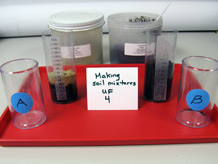
- Mix approximately 200cc of organic soil with approximately 100cc of sand. Put approximately 50cc of the mix into 6 capped containers; label these "A."
- Put approximately 50cc of the organic soil into each of 6 capped containers; label these "B."
For the class:
- Post the investigation question in a place where all students can see it.
- Prepare a large, blank Venn diagram for recording students' data; an example appears in Step 3.
For each tray:
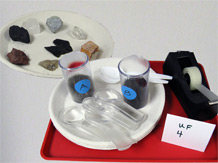
- 1 container of the sandy soil mix "A"
- 1 container of the organic soil "B"
- 1 plate with 8 mineral samples: quartz, mica, biotite, feldspar, halite, hematite, talc, and graphite; this set of minerals was also used in the last investigation
- clear tape
- 2 spoons
- 4 magnifying glasses
- 4 plates
Do students recognize these components of soil: minerals, organic matter and spaces filled with air or water?
As you look for evidence in students’ notebook entries, these questions can help you interpret their writing. Do students:
- recognize that there are spaces between the soil grains, filled with air or water?
- understand that these spaces are important components of soil?
When some of her students had difficulty imagining air spaces in a container of soil, here’s the next step one teacher took.


